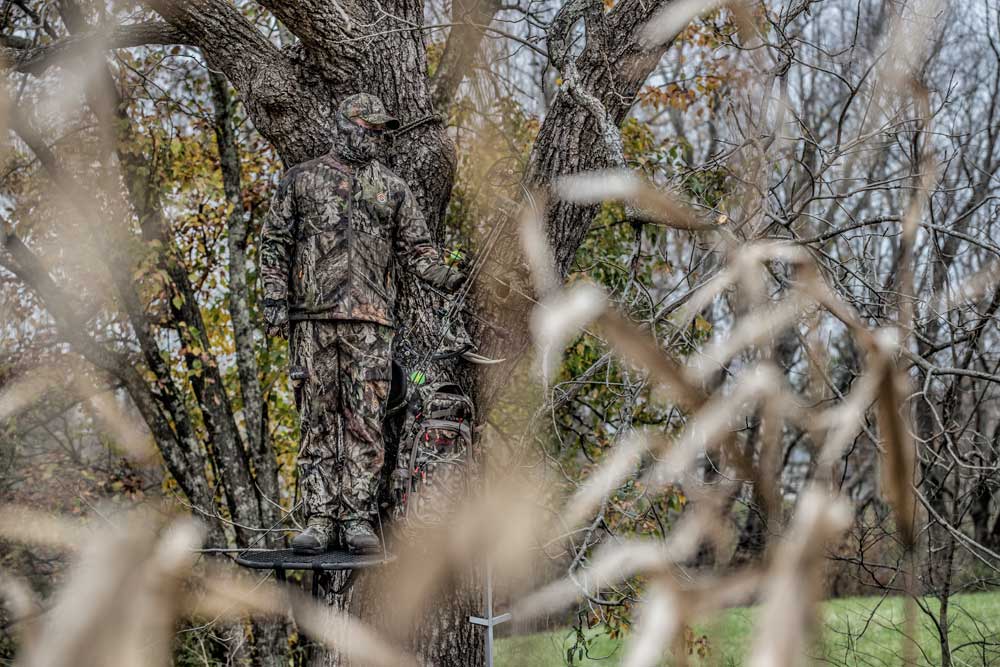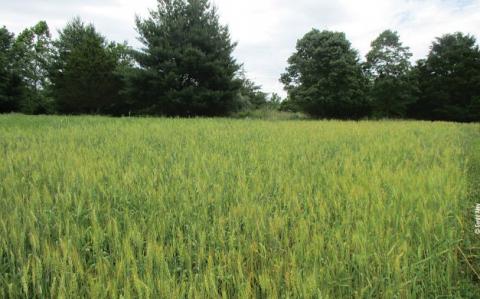Ronnie “Cuz” Strickland

Tip 1: Safety Harness
Nowadays, anyone who climbs into a tree stand without a good safety harness is not only taking unnecessary chances, their also bad for hunting in general.
Anytime a hunter is injured in the field, it’s a bad reflection on all of us. It seems the only publicity the hunting community receives is bad, so accidents so e avoided all cost. Surprisingly enough the vast majority of hunting accidents do not involve forearms of shooting, It’s tree stand mishaps that cause the majority of injuries to hunters.
Always use a safety harness and have it around you and the tree while climbing. Don’t wait until you’re up the tree to put the harness on. Climb up and down with it. Make your harness or safety belt part of your hunting outfit. Lay it out with the rest of your clothes and put it on before you even leave home or camp.
Today there’s no excuse for climbing into a stand without a harness. Use your and insist yours hunting partners do the same.
Tip 2: Flashlight
Dawn and after dusk - these are the conditions when you’re at the greatest risk of being mistaken as a deer by another hunter who “wasn’t supposed to be there.”
Always use a flashlight while moving to and from your stand site in low light conditions. Make yourself climb down from your stand before it’s pitch black dark. On evening hunts, always make sure you have enough light to see when descending your stand. Don’t wait until it’s too dark to see where you’re placing your feet and hands. It’s not worth it.
On morning hunts, when you need to travel before sunrise, use “Bright-Eye” thumbtacks with reflective heads These tacks glow brightly when struck by a flashlight’s beam and make re-locating stand sites easy. They are visible but not conspicuous during the daylight hours.
Some hunters like to stay in their stands until way after dark. No deer is worth taking the chances. Climb down while you can still see and hunt him tomorrow.
Tip 3: Shooting Lanes
If you’re preparing your stand sites before the season opens, go ahead and open up some shooting lanes that may offer you more than one shot option.
The best way to cut shooting lanes is to utilize a partner. Once you’ve selected the spot you’re going to hunt, go ahead and place your stand and get in it. Have a friend on the ground with a portable saw and point out to them what obstructions need to be removed. Make sure you have two or three shooting lanes but don’t go overboard. The key is to open up some reasonable lanes without removing too much natural cover. Deer are creatures of habit and know the woods like you know your living room. Always check your state and federal regulations before cutting limbs or brush or before using any type of tree stand or screw in steps. Some types of tree stands and steps are illegal on public land.
Shooting lanes can pay off big time when you’re hunting deer in thick cover. If possible, try to get your scouting and sawing done well before you plan on hunting.
Tip 4: Be Quiet
Ever wondered what you sound like to a deer when you’re walking to or leaving your tree stand?
Some hunters spend days searching for that perfect stand site and then blow their chances by alarming deer on their approach. Once you located fresh sign be it a trail, feeding sign, fresh rubs or scrapes, spend some extra time planning the best way to approach your stand. Determine where you feel the deer are coming from and make sure your walk in avoids that area. Try to find the quietest route. Look for open areas where you avoid brush and go ahead and clear a path in the leaves if you have time. At the very least, leave early and stalk your way in making as little noise as possible. If your approach is through heavy leaves, break your rhythm when walking. Walk, stop for while walk further and stop again.
Some hunter’s even use a game call like soft turkey yelps or deer grunts while walking in the leaves. Anything you can do to ease the sound of intrusion is a plus.
Tip 5: Concealment
Bowhunters learn early on to utilize back cover in any tree stand setup. When the desired shots are 20 yards or less, total concealment is crucial.
When you find fresh sign, look around for a tree that offers you the best possible concealment. Look for forked trees or limbs with foliage that may make for good cover. Take a minute and look up like approaching deer might do. Put yourself at the deer’s eye level and look around the area for back cover such as leaves or other tree trunks that might keep you from being silhouetted. If there is absolutely no back cover available, make your own. Cut some smaller limbs or brush and simply tie to the backside of your tree. With today’s great camo patterns like Break-Up Country or Bottomland, blending into your surroundings is easy, but making that final move at the moment of truth may require a little extra concealment.
It only takes a few minutes to study a location and pick the absolute best spot that offers the most cover possible.
Tip 6: Wind Direction
When you find a good location, be it food or trails, determine what is the most constant wind direction at that location.
Hang your stand so your scent blows away from where you believe the deer will approach. Do not hunt that stand location unless the wind is right. Many morning’s thermal currents will actually make your scent rise. These are ideal conditions, especially for bowhunters, but don’t depend on these thermals to keep you undetected. Wait until you’re sure the wind is right and constant. If the sign is heavy and you feel good about your chances in that spot, then the urge to hunt it right away will be great. Don’t do it.
Make yourself wait until conditions are right. Many times the first time you hunt a stand is your best chance to encounter the buck.



























